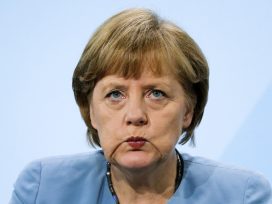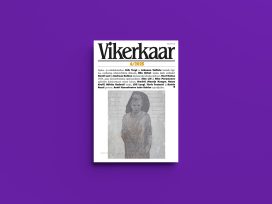Reasons for the current upsurge in memory
Over the last quarter century, every country, every social, ethnic or family group, has undergone a profound change in the relationship it traditionally enjoyed with the past. Pierre Nora looks at where this “memorialism” came from and why.
We are witnessing a world-wide upsurge in memory. Over the last twenty or twenty-five years, every country, every social, ethnic or family group, has undergone a profound change in the relationship it traditionally enjoyed with the past.
This change has taken a variety of forms: criticism of official versions of history and recovery of areas of history previously repressed; demands for signs of a past that had been confiscated or suppressed; growing interest in “roots” and genealogical research; all kinds of commemorative events and new museums; renewed sensitivity to the holding and opening of archives for public consultation; and growing attachment to what in the English-speaking world is called “heritage” and in France . However they are combined, these trends together make up a kind of tidal wave of memorial concerns that has broken over the world, everywhere establishing close ties between respect for the past – whether real or imaginary – and the sense of belonging, collective consciousness and individual self-awareness, memory and identity.
France was quite possibly the first to embark on this age of ardent, embattled, almost fetishistic “memorialism”. It was followed, after the fall of the Berlin Wall and the collapse of the Soviet Union, by the “recovery of memory” in Eastern Europe. And this in turn was followed, after the fall of the military dictatorships in Latin America, and after the end of apartheid in South Africa and the Truth and Reconciliation Commission, by a world-wide “memorialism” and the emergence of all kinds of initiatives that, in one form or another, involved settling scores with the past.
This French specificity resulted from the confluence, in the mid-1970s, of three major phenomena which, though apparently independent of each other, had the combined effect of pushing France from a historical awareness of itself into an awareness by memory. With a slight twist in the chronology, it could be argued that 1975 was the signal moment when the after-effects of the economic crisis, the fallout from the post-de Gaulle era, and the exhaustion of the revolutionary idea most visibly encountered one another.
The economic crisis, unleashed in 1974 by the huge rise in oil prices, affected all industrialised countries. France, however, felt it all the more acutely because the crisis put an end to thirty years of accelerated growth and intensive industrialisation and urbanisation, which had mercilessly swept away an entire set of traditions, landscapes, jobs, customs, and life styles that had long remained unchanged in France, more so than in any of its industrial neighbours. This reversal in growth forced France to recognise not only the damage caused by progress but also the uprooting of what until the Second World War had remained its foundation-in particular, the profound, centuries-old stability of the rural society.
Sociologists and historians had been writing about the end of the peasantry for fifteen years, but its demise suddenly became almost tangible and as painful as an amputation. It was the end of the prototypical “collective memory”. In 1975, the percentage of the population actively engaged in agriculture fell below 10 per cent, a fateful threshold. In 1945, right after the Second World War, it had still been about 50 per cent. That was the year when the unexpected and meteoric success of a series of books – such as Pierre-Jakez Hélias’ Le Cheval d’orgueil, the chronicle of a traditional Breton village; Emmanuel Le Roy Ladurie’s Montaillou, village occitan; and Georges Duby and Armand Wallon’s L’Histoire de la France rurale – made it obvious that “rural memory” existed only through emotional or scholarly education. The ending of the rural era, soon accompanied by the ending of the mass in Latin, cut the umbilical cord that still connected France to what Jacques Le Goff has called the long Middle Ages of France and led to the growing popular success enjoyed ever since by the Middle Ages and its monuments.
It is not unreasonable to suggest that the accession of Valéry Giscard d’Estaing to the presidency in 1974 reinforced this implantation of the imaginary. Here was a brilliant young economist from the upper bourgeoisie, a European at heart, in favor of “relaxing” political life, who began his term of office under the banner of “change”. What kind of rooted France did he embody? The accelerated pace of the new presidency, deliberately technocratic and Parisian, may not have been at odds with France’s enthusiastic plunge into the lost and recovered past, the emerging effects of which were just becoming widespread when, to everyone’s surprise, 1980 became the year the President of the Republic proposed to dedicate himself to the national heritage.
The arrival of Giscard d’Estaing heightened the effects of the post-de Gaulle period and marked a sharp break with the Gaullist tradition in all areas. This second major phenomenon produced numerous effects, powerful as they were insidious, which deserve deeper exploration. Concerning the reinterpretation of the national past, they manifested themselves in three waves of different duration.
The first was short. General de Gaulle’s death in November 1970 put a quick end to the prevailing version of the Resistance – imposed when Paris was liberated by de Gaulle – according to which the entire French nation, with the exception of a handful of traitors and lost souls, resisted the German occupation. The emergence of the dark memory of Vichy France, which was to become “the past that did not pass”, was signaled threefold: by the indignant reactions by associations of Resistance fighters to the pardon granted by President Pompidou to the milicien Touvier (1971); by Marcel Ophuls’ 1972 film The Sorrow and the Pity, which revealed an unheroic France (the film was not allowed to be shown); and by the translation into French of Robert Paxton’s book Vichy France: Old Guard and New Order [La France de Vichy (1973)], which contrasted sharply with the official history.
The second wave was longer. The post-de Gaulle period represented a return to a more distant and deeper past. The survival of the institutions of the Fifth Republic – though tailored for the General then adopted by François Mitterrand as soon as he came to power, though he had opposed them when in opposition – confirmed the suspicion that de Gaulle had won his historic gamble by restoring the balance among state institutions that the fall of the absolute monarchy had disrupted at the time the Revolution. It was a presentiment that François Furet, for example, conveyed in a famous sentence from his book Penser la Révolution française: “The French Revolution is over.” By the same token, the last two centuries were reinserted into the long continuity of the nation-state. The entire monarchical past was reevaluated positively, and, contrary to all expectations, the improbable millennium of Hugues Capet in 1987, which preceded the fifteen hundredth anniversary of Clovis in 1996, was a popular success, based on the theme that France is a thousand years old!
Still more generally, the rise of nation’s last great figure to his zenith reinvigorated the entire pantheon. It was impossible not to make a connection between the exaltation of the “great man” and the return of a historical biography, a flourishing genre in these years after long neglect, and a renewed sensibility of the French for “a certain idea of France”, not only for its history but also for its landscape, its cuisine, its fields, and its traditions. This sensibility accounted for the rapid rise of the extreme right and Jean-Marie Le Pen’s National Front. For the left, it meant that their concern for the nation had regained its legitimacy – a legitimacy which, thanks to the decline of the revolutionary idea, served to emphasise that Marxism had run aground.
The third phenomenon, less perceptible but perhaps of greater importance, contributed powerfully to the remodelling of the French attitudes toward their own past. The major events of those years included the intellectual collapse of Marxism; the falling of the Soviet Union into total disrepute; the rapid decline of the Communist party, which just a few years before was still mobilising about a quarter of the electorate; and the eclipse of the party’s influence on most of the French intelligentsia. To complete the picture, the year 1975 saw the enormous success of the French translation of Alexander Solzhenitsyn’s Gulag Archipelago. Here too the phenomenon extended well beyond national boundaries, but it was highlighted by the existence of a strong Communist party that was still profoundly Stalinist.
In a country like France, the home, the mother of revolutions since 1789, the end of the revolutionary idea, which had been the most potent vector directing historical times toward the future, could only lead to a rapid transformation in feelings about the past. In a concept of time organised around revolutions, it was clear what had to be retained from the past in order to prepare the future. It was clear as well what parts must be suppressed, forgotten, and destroyed if need be. Historical time of the revolutionary type is informed by the desire for rupture. The devaluation of the notion of rupture that accompanied the decline of the revolutionary idea restored legitimacy to the idea of tradition. Not a tradition of which we would be the heirs and sustainers (as in the revolutionary mode), but a tradition from which we would be forever separated, one that would thereby become precious, mysterious, and imbued with an uncertain meaning, which was our task to recover. The meteoric rise of the cult of national heritage has no other source. Its secret? The disappearance of historical time oriented by the revolutionary idea restored to the past its freedom, its indetermination, its stature-both material and immaterial.
Together, these three phenomena, not the only ones but surely the most powerful, were soon promoting the idea of a national “memory”. Though the idea dates back only about thirty years, it has grown with embellishment.
This “memorialist” trend, for which I have suggested the name “the age of commemoration”, is so widespread, so deep-seated and all-powerful, that it may be worthwhile – at the risk of confining oneself to generalisations or trivialities – trying to understand the reasons for it. This upsurge in memory intersects, its seems to me, with two major historical phenomena which have marked the age, one temporal and one social. It is these two phenomena that I would like to underline and present for discussion today.
The first concerns what is usually referred to as the “acceleration of history”. This notion, first put forward by Daniel Halévy, essentially means that the most continuous or permanent feature of the modern world is no longer continuity or permanence but change. And increasingly rapid change, an accelerated precipitation of all things into an ever more swiftly retreating past. We must take the measure of this change for the way in which memory is organised. It is of crucial importance, for it has shattered the unity of historical time, that fine, straightforward linearity which traditionally bound the present and the future to the past.
In effect, it was the way in which a society, nation, group or family envisaged its future that traditionally determined what it needed to remember of the past to prepare that future; and this in turn gave meaning to the present, which was merely a link between the two. Broadly speaking, the future could be interpreted in one of three ways, which themselves determined the image people had of the past. It could be envisaged as a form of restoration of the past, a form of progress or a form of revolution. Today, we have discarded these three ways of interpreting the past, which made it possible to organise a “history”. We are utterly uncertain as to what form the future will take. And because of this uncertainty, the present – which, for this very reason no doubt, now has a battery of technical means at its disposal for preserving the past – puts us under an obligation to remember. We do not know what our descendants will need to know about ourselves in order to understand their own lives. And this inability to anticipate the future puts us under an obligation to stockpile, as it were, in a pious and somewhat indiscriminate fashion, any visible trace or material sign that might eventually testify to what we are or what we will have become. In other words, it is the end of any kind of teleology of history – the end of a history whose end is known – that places on the present this urgent “duty to remember” () that is so much talked about. Unlike my friend Paul Ricur, who keeps his distance from this hackneyed phrase, preferring that of “effort to remember” (), I am willing to accept the term, provided it is understood in a much broader sense than is usually attributed to it, a sense more mechanical, material and heritage-based than moral, and linked, not to the idea of “debt” but of “loss”, which is a very different matter.
For the other effect of this “acceleration of history”, symmetrical whith that of the future, is to abruptly distance us from the past – we are cut off from it. It has become what an English demographic historian has famously described as “the world we have lost”. We no longer inhabit that past, we only commune with it through vestiges – vestiges, moreover, which have become mysterious to us and which would do well to question, since they hold the key to our “identity”, to who we are. We are no longer on very good terms with the past. We can only recover it by reconstructing it in monumental detail with the aid of documents and archives; in other words, what we today call “memory” – a form of memory that is itself a reconstruction – is simply what was called “history” in the past. We are dealing here with a radical and dangerous shift in the meaning of words, a shift itself characteristic of the spirit of the age. “Memory” has taken on a meaning so broad and all-inclusive that it tends to be used purely and simply as a substitute for “history” and to put the study of history at the service of memory.
The “acceleration of history”, then, has two effects on memory:
– on the one hand, it leads to a kind of stockpiling, bound up with this feeling of loss and responsible for the exaggerated importance now attached to memory and the proliferation of institutions and instruments that relate to it: museums, archives, libraries, collections, digitalized inventories, data-banks, chronologies, and so forth;
– and on the other, between an unforeseeable future and a past shrouded in darkness or mist, the autonomising of the present, the emergence of the present as a category for understanding our own lives, but a present that is already historical and overlaid with an awareness of its own character and truth. It is this explosion of historical and temporal continuity which, in my opinion, makes memory so topical today: the past is no longer the guarantee of the future, and it is largely for this reason that memory has come to play such an active role in society and been invested with a promise of continuity. In the old days, it was the past and the future that were independent, the present acting as a bridge between them. Today, it is the present and memory that are independent.
The second reason for this outbreak of memory is of a social nature and is linked to what might be called, by analogy with “acceleration”, the “democratization” of history. This takes the form of a marked emancipatory trend among peoples, ethnic groups and even certain classes of individual in the world today; in short, the emergence, over a very short period of time, of all those forms of memory bound up with minority groups for whom rehabilitating their past is part and parcel of reaffirming their identity.
Minority memories of this kind are mainly the outcome of three types of decolonization: international decolonization, which has allowed societies previously stagnating in the ethnological inertia of colonial oppression access to historical consciousness and the rehabilitation (or fabrication) of memories; domestic decolonization, within traditional western societies, of sexual, social, religious and provincial minorities now being integrated with the mainstream and for whom reaffirming their “memory” – in actual fact, their history – is a way of having their “particularism” recognized by a community that had previously refused them that right, while at the same time cultivating their difference and their attachment to an identity threatened with disintegration. (Had I had the time, I would have liked to have shown you this, taking working-class or Jewish memory, for example.) Finally, there is a third type of decolonization which followed on the collapse of twentieth-century totalitarian regimes, whether communist, Nazi or just plain dictatorial: an ideological decolonisation which has helped reunite these liberated peoples with traditional, long-term memories confiscated, destroyed or manipulated by those regimes: this is the case with Russia and many countries in Eastern Europe, the Balkans, Latin America and Africa.
The explosion of minority memories of this kind has profoundly altered the respective status and the reciprocal nature of history and memory – or, to be more precise, has enhanced the very notion of “collective memory”, hitherto little used.
Unlike history, which has always been in the hands of the public authorities, of scholars and specialised peer groups, memory has acquired all the new privileges and prestige of a popular protest movement. It has come to resemble the revenge of the underdog or injured party, the outcast, the history of those denied the right to History. Hitherto, if it did not have truth, it at least had loyalty on its side. What is new, and what it owes to the abysmal sufferings of the last century, to the increase in life expectancy and to the continuing presence of survivors, is the demand for a truth more “truthful” than that of history, the truth of personal experience and individual memory.
History, on the other hand, though it was always founded on memory, as a discipline that aspired to scientific status had traditionally been built up in opposition to memory, thought to be idiosyncratic and misleading, nothing more that private testimony. History was the sphere of the collective; memory that of the individual. History was one; memory, by definition, plural (since by nature individual). The idea that memory can be collective, emancipatory and sacred turns the meaning of the term inside out. Individuals had memories, collectivities had histories. The idea that collectivities have a memory implies a far-reaching transformation of the status of individuals within society and of their relationship to the community at large. Therein lies the secret of that other mysterious shift which has occurred, and on which a little light needs to be thrown: the shift in our understanding of identity, without which it is impossible to understand this upsurge in memory.
The concept of identity has undergone a similar reversal in meaning at the same time as that of memory. It has gone from being an individual and subjective notion to a collective, quasi-formal and objective one. Traditionally, identity characterises all that is unique about an individual – so much so, in fact, that it has acquired an essentially administrative sense relating to law enforcement: our fingerprints are the expression of our “identity”, we have “identity” cards and papers. The expression has become a group category, a way of defining us from without. “One is not born a woman”, Simone de Beauvoir famously remarked, “one becomes one”. It might serve as a catch-phrase for all identities created from self-assertion. Identity, like memory, is a form of duty. I am asked to become what I am: a Corsican, a Jew, a worker, an Algerian, a Black. It is at this level of obligation that the decisive tie is formed between memory and social identity. Viewed in this light, they are both governed by the same mechanism: the two terms have become all but synonymous, and the fact that they have merged reflects a change in the way that history and society interact.
France, with an intensity both emotional and political, has traditionally maintained an essential, determining connection to its history and its past. That is why France knew such a broad and profound transformation of national historical consciousness in social consciousness. With the installation of the Third Republic this connection assumed a particular centrality, since history had become the nerve of the social and political bond. Through the schools, the scholarly little manuals of Ernest Lavisse, and books for children like the celebrated Tour de la France par deux enfants, the grand narrative of the national collectivity was set. An epic in many different versions, offered to everyone, it smoothed out any particularity, whether provincial, familial, linguistic, religious, social, or sexual, that did not readily fit the grand national history. On the one hand, therefore, was a saga, a powerful recitative with a touch of epic, with its highs and lows, its great moments and its ordeals, its inexhaustive repertoire of personalities, scenes, lines, intrigues, dates, good and bad people – an absorbing family saga starting with Vercingétorix and the battle of Alésia and ending with the triumph of the Republic and the Rights of Man, touching on the Crusades, Louis XIV, the Enlightenment, the Revolution, the Napoleonic epic, the colonial conquests, the trials of World War I, and ending up with de Gaulle, the heir to all of this. On the other hand were particular affinities and individual loyalties. In sum, there is a collective national history on the one hand, private memories on the other. It was sacred history because it was just like the religious catechism it was supposed to combat; holy because it was that of the which merited the sacrifice of one’s life; a legend – but one that acted as a driving force for social integration, cohesion, and promotion. And then there were the memories (or memoirs) of particular groups, or rather minorities: workers, Jews (called “Israelites” at the time), royalists, Bretons or Corsicans, women. It was on this division that traditional French identity was constructed and developed for a century, and this was the mould that cracked. It cracked under a double movement: the internal collapse of the myth that bore the national project and the emancipation that liberated the minorities.
This double movement burst forth in the crucial decade of the 1970s, when France experienced a key transformation. The emergence of a sovereign, tyrannical, and almost intrusive “national memory” was tied directly to the transition from a historical consciousness of self to a social consciousness; national identity was replaced by social identities. Traditional faith in the greatness and destiny of France was attacked from within; the European, colonial, and world wars – 1914-1918, 1939-1945, and the Algerian War – led not only to a real reduction in power but also to profound, insidious doubt about the validity and infallibility of the classic national model. The result was an upsurge of the repelled episodes of the national consciousness (from the Terror during the Revolution to torture during the Algerian War in the 1950s); a crisis in all the institutions – churches, unions, parties, families – whose mission it was to give a national form; an uncertainty about what to teach in the schools, and inability to achieve a balance between the forces of decentralisation and the move to join the European Union. During that time, a powerful internal decolonisation movement and the emancipation of group identities were taking place in France; each minority seeking integration wanted its own history, its “memory”; each wanted “to reappropriate its own memory” and demanded that the nation recognise that history. The Jewish case serves as a prime example. Hardly anyone would have spoken about a Jewish “memory” thirty years ago. Even the memory of Vichy was not totally linked to anti-Semitic legislation or to the French state’s responsibility for deportation and extermination. The opposite situation exists today. The “Jewish community” – a phrase that would not have been used then – has relentlessly demanded that the president of the Republic recognise France’s responsibility in that regard. Jacques Chirac acceded to that demand on July 16, 1995, at the Vélodrome d’Hiver, the sports stadium to which Jews were herded in 1942 prior to deportation. What in France is now called the “national memory” is nothing other than the transformation of historic memory, which has been invaded, subverted, and flooded by group memories.
At this point, of course, it would be important to describe in greater detail how this new memory is organised. I have tried to do this in my introductions and conclusions to Realms of Memory. Let us make do for the moment, by way of conclusion, with underlining some of the immediate effects of this recent surge in memory. There are two main effects, it seems to me.
The first consists in a dramatic increase in the uses made of the past for political, commercial and tourist purposes. One example of this is a sharp rise in the number of commemorative events, particularly in France. The last decade, 1989 to 2000, may even have marked the high point of this “age of commemoration”, with at one end the Bicentenary of the French Revolution – in which the phenomenon, already well under weigh by this time, took on its full historic, political, national, religious, ideological and symbolic significance – and at the other the new millennium. Between those two dates, each year brought its particular batch of commemorations, from the Dreyfus affair and the th anniversary of the armistice of 1918 to the 1,500 anniversary of Clovis and the 150 anniversary of the abolition of slavery. France is, I believe, the only country to have set up a National Festivities Bureau, now in its twentieth year. There are all kinds of reasons for this proliferation of commemorative events, but they all go to show that the past has ceased to have a single meaning and that a present that is overlaid with an awareness of its own history necessarily allows for several possible versions of the past.
The second effect of this change in the way memory is organised has been to deprive the historian of the monopoly he traditionally enjoyed in interpreting the past. In a world in which you had collective history and individual memories, the historian exercised exclusive control, so to speak, over the past. This privilege had even been greatly consolidated over the last hundred years by what is sometimes referred to as “scientific” history. To the historian alone befell the task of establishing the facts, producing the evidence and delivering the truth. It was his profession and his mark of respectability. Today, the historian is far from alone in manufacturing the past; it is a role he shares with the judge, the witness, the media and the legislator. All the more reason, therefore, to speak out loud and clear today on behalf of the “duty towards history”, rather than the “duty to remember”, the need for which a few of us were proclaiming some twenty or twenty-five years ago.
For the real problem raised by the sacred aura with which memory has now been invested is to know how, why and at what moment the otherwise positive principle of emancipation and liberation on which it is based backfires and becomes a form of closure, a grounds for exclusion and an instrument of war. To claim the right to memory is, at bottom, to call for justice. In the effects it has had, however, it has often become a call to murder. The time has perhaps come to bring against memory the charge that in his Untimely Meditations Nietzsche brought a century ago against history, but replacing the word “historical” by “memorial”: “There is a certain degree of sleeplessness, of rumination, of [memorial] significance beyond which any living creature is threatened with collapse, and in the long run destroyed, whether it be an individual, a people or a civilization.” It is this message left by memory that we also need to remember.
Published 19 April 2002
Original in French
First published by Transit 22/2002
Contributed by Transit © Pierre Nora / Transit / Eurozine
PDF/PRINTPublished in
In collaboration with
Newsletter
Subscribe to know what’s worth thinking about.
Related Articles

The digital world we navigate today was built on centuries of technological innovation by librarians and archivists. The unprecedented access to online information now compels these institutions to evolve. In this discussion, librarians and a data steward from Helsinki, Vienna, and Pécs explore the challenges and opportunities of this transformation.

The ceasefire between Hamas and Israel has brought a sigh of relief to the international community – not least because we love to avoid discussing, even thinking about this conflict. Why is that? In this Standard Time episode we talk about anti-muslim racism and how to understand what’s happened in Gaza.





